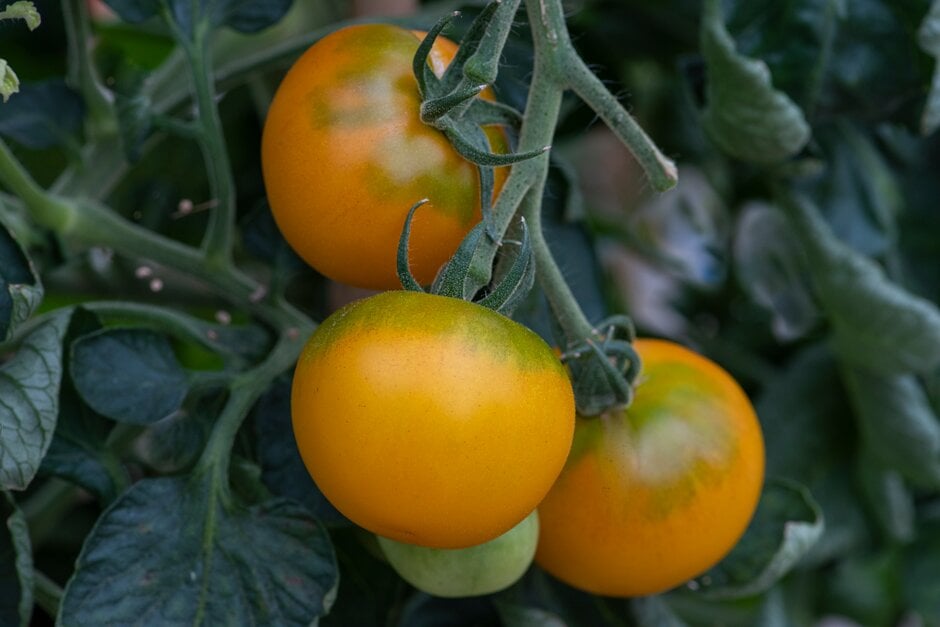Size
Ultimate height
1–1.5 metresTime to ultimate height
1 yearUltimate spread
0.5–1 metresGrowing conditions
Moisture
Moist but well–drainedpH
Acid, NeutralColour & scent
| Stem | Flower | Foliage | Fruit | |
| Spring | Green | |||
|---|---|---|---|---|
| Summer | Yellow | Green | Yellow | |
| Autumn | Green | Yellow | ||
| Winter |
Position
- Full sun
Aspect
South–facing or West–facing
Exposure
Sheltered Hardiness
H1CBotanical details
- Family
- Solanaceae
- Native to GB / Ireland
- No
- Foliage
- Evergreen
- Habit
- Bushy, Columnar upright
- Genus
Solanum can be annuals, perennials, evergreen or deciduous shrubs or twining climbers, with simple or pinnnately lobed leaves and star- or bowl-shaped, 5-lobed flowers with prominent stamens, followed by fleshy fruits
- Name status
Accepted
How to grow
Cultivation
Tomatoes can be started from seed indoors or in a heated greenhouse. See tomato cultivation. For help with diagnosing tomato problems see our video What's gone wrong wtih my tomatoes?
Propagation
Propagate by seed. See sowing vegetable seeds or sowing seeds indoors for further advice
Suggested planting locations and garden types
- City and courtyard gardens
- Cottage and informal garden
- Patio and container plants
- Conservatory and greenhouse
- Edible fruit
- Wall side borders
Pruning
Remove all side shoots and pinch out the growing tip when the plant has reached the top of the greenhouse or have set seven trusses indoors or four trusses outdoors
Pests
May be susceptible to glasshouse whitefly
Diseases
May be susceptible to honey fungus (rarely), potato blight, tomato blight, tomato leaf mould, tomato viruses, magnesium deficiency and blossom end rot. See Tomatoes: leaf problems
Get involved
The Royal Horticultural Society is the UK’s leading gardening charity. We aim to enrich everyone’s life through plants, and make the UK a greener and more beautiful place.
